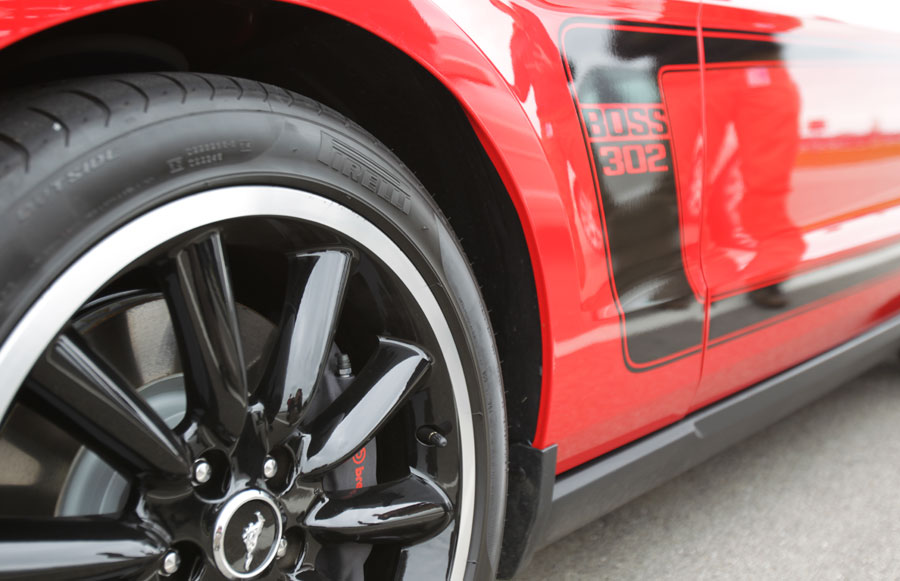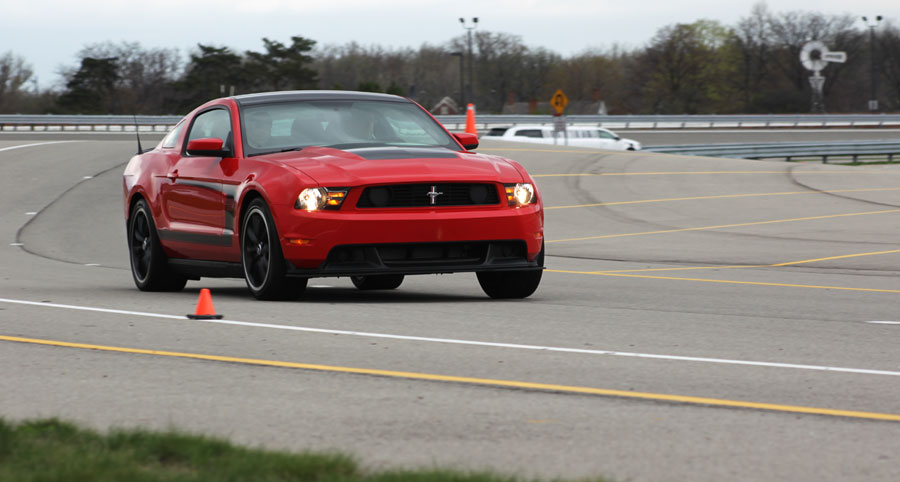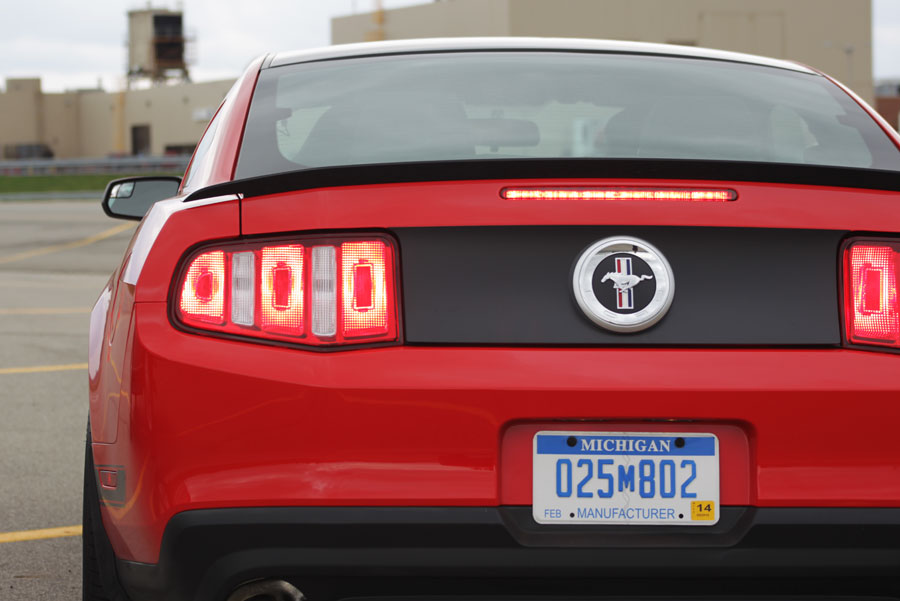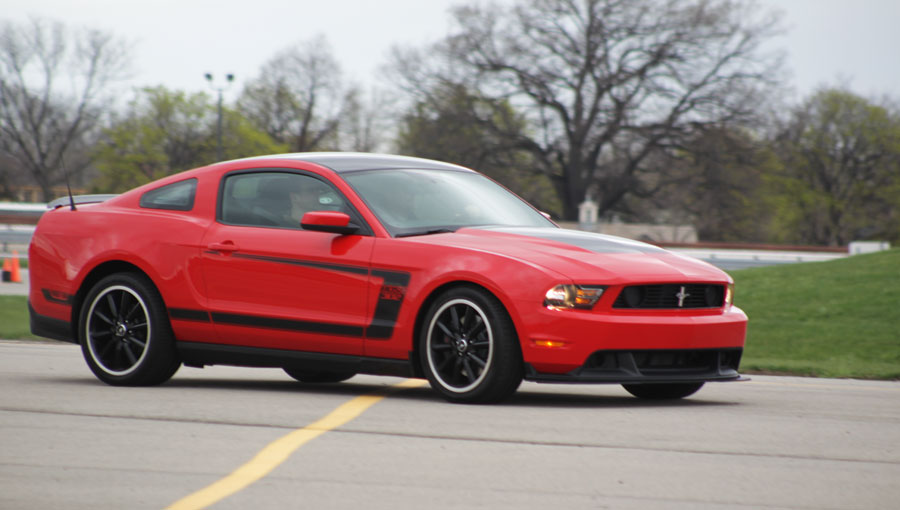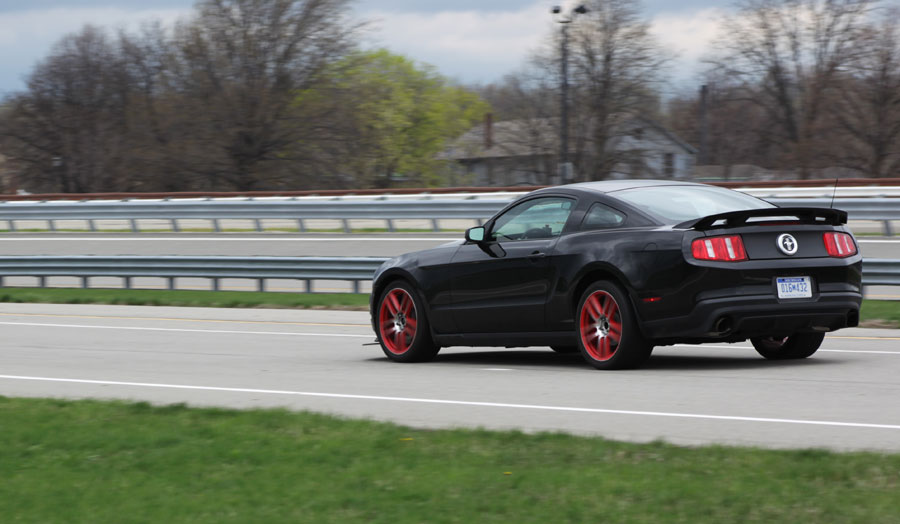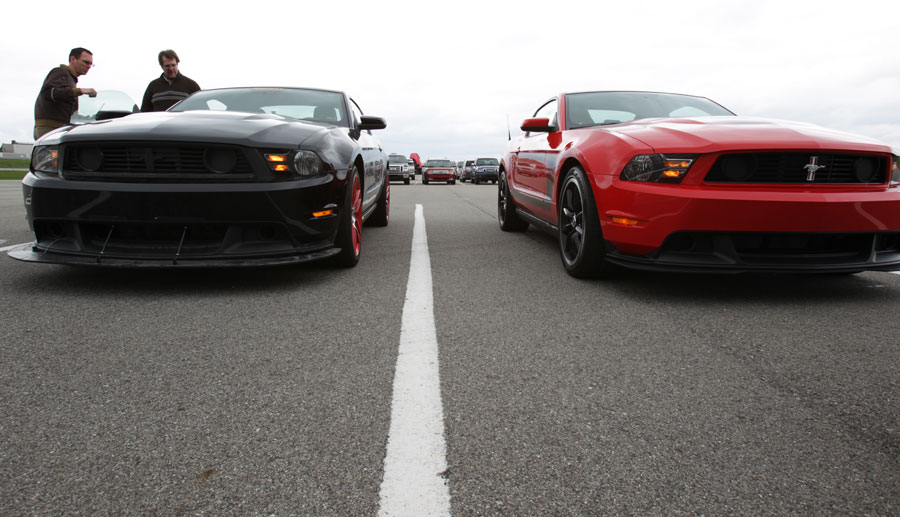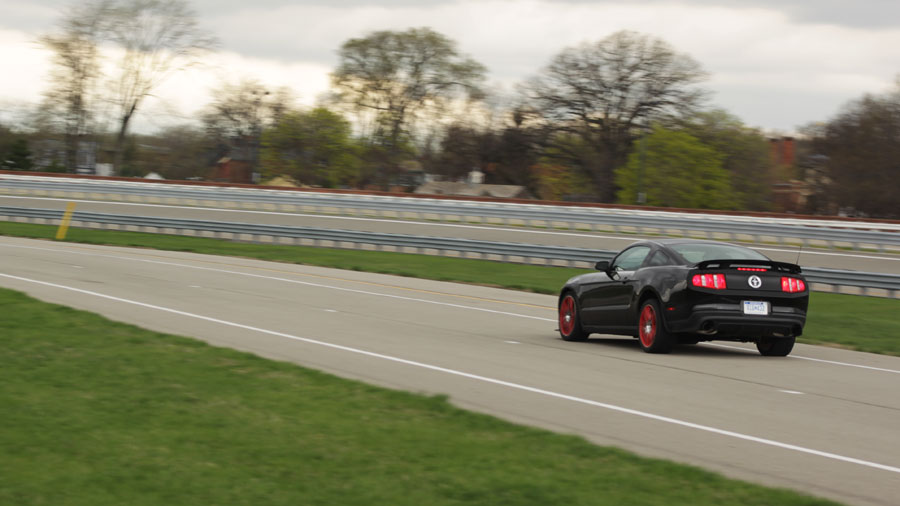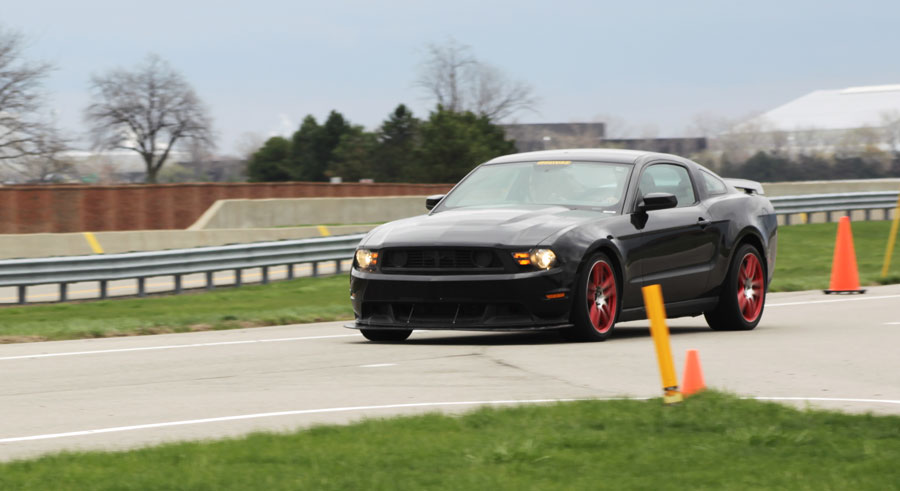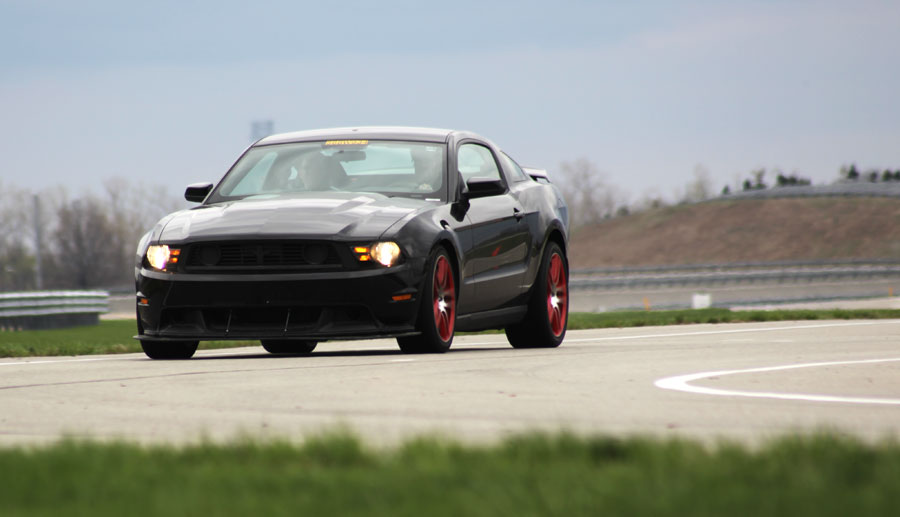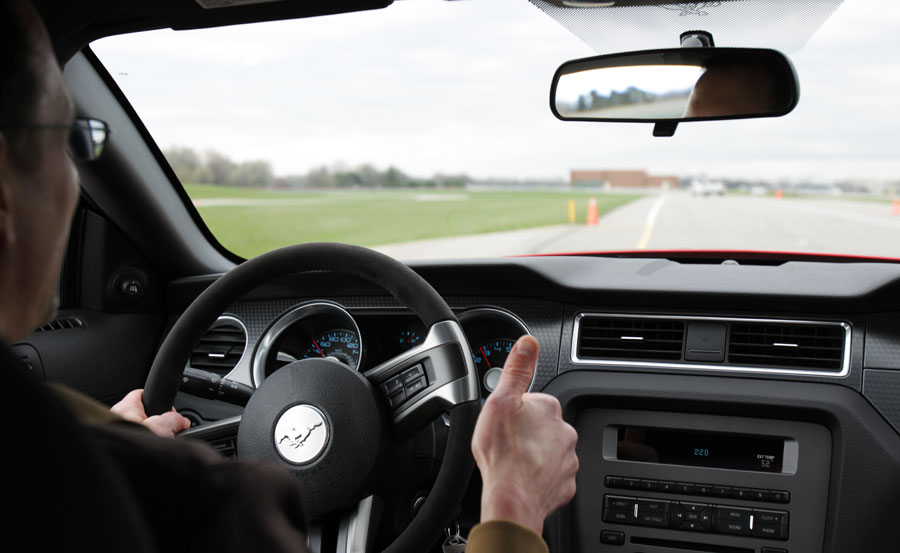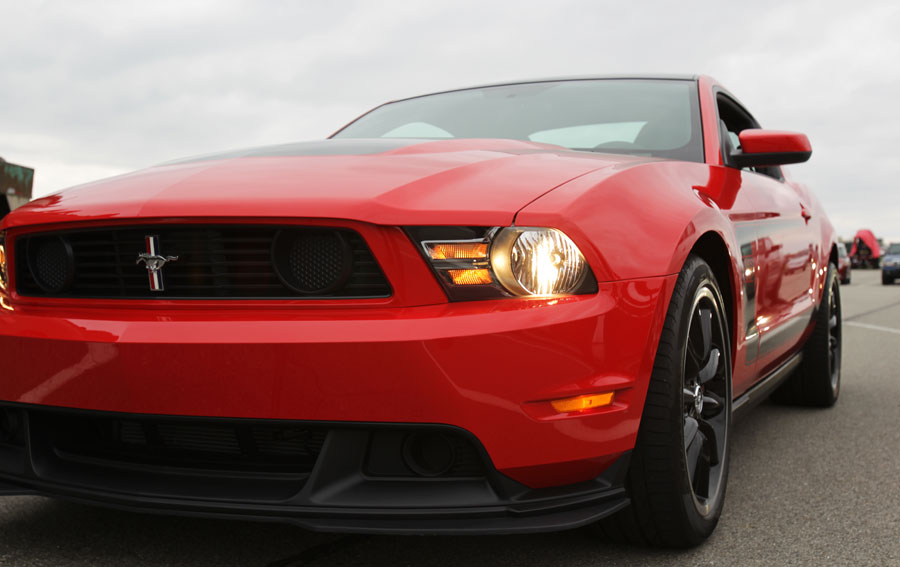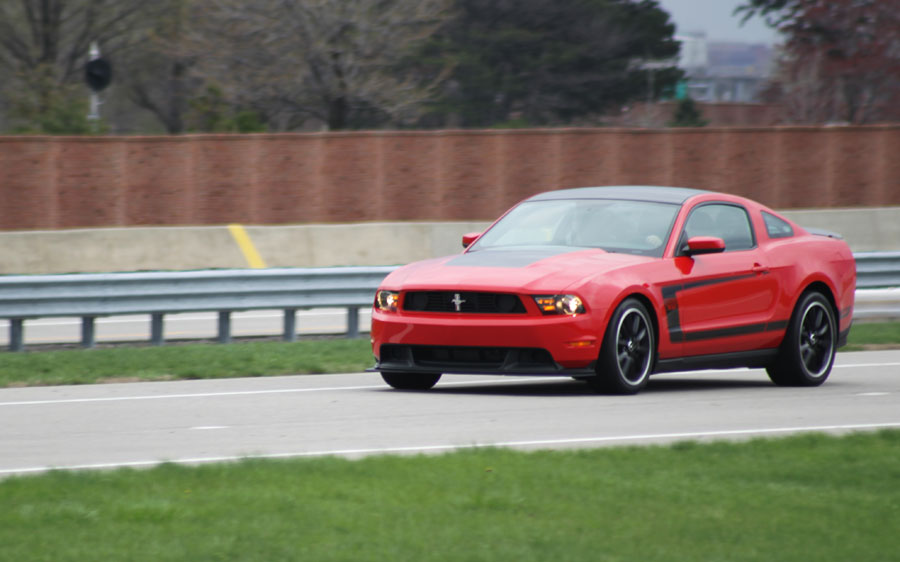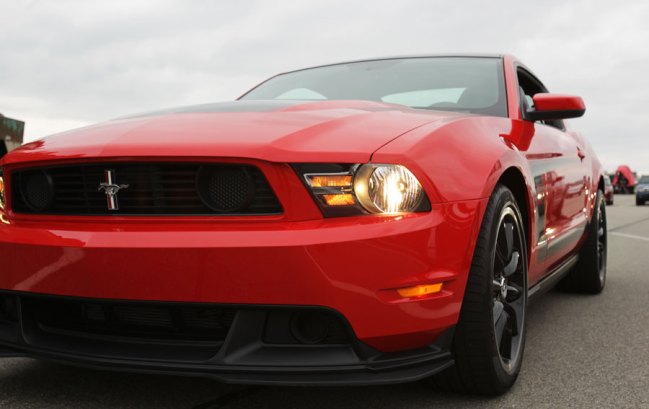
For those hankering for a thrill ride, look no further than the 2012 Ford Mustang Boss 302. Originally produced in 1969 and 1970 as a true racing car as a compliment to the popular production version, the Boss is essentially a muscle car in a smaller body size that hugs corners, pounds out a full 440-horsepower from a 5.0-liter V8 engine, and has 380 lb-ft of torque for serious bone-crunching fun.
We tested both the standard Boss 302 (available in red with black accents) and the Boss 302 Laguna Seca (black with red accents) at the Ford Proving Grounds in Dearborn, Michigan. The two vehicles are quite similar, but the Laguna Seca – which we tested in a prototype phase – has more of a racing feel, with finely tuned brakes, suspension, and steering meant for faster speeds. The most noticeable difference we found is that the Laguna Seca version has a preternatural growl that could be more effective at scaring small children as you drive around town.
A reborn classic
In appearance, the 15.5-foot vehicle looks stocky but not compact. Just a day before driving the 302, we drove a 2012 Dodge Charger, another muscle car that proved helpful to note the differences. In person, the 302 just looks like a race car, even though it is street legal. Despite varying price tags, some of our more recent rides highlight interesting styling differences between cars at this performance level: The Audi R8 is low-slung and audacious, and the Chevy Corvette Z06 (which we drove last summer in Detroit) is curvy and also low to the ground. The 302 has more of a classic styling.

All of the color accents on the vehicles are subdued and yet, like the 1970 version, the 2012 Boss 302 also exudes a bold style. For example, the standard model has black accents on the front and rear spoiler, roof, and doors. The overall look is sporty but not garish like some of the throw-back vehicles. Somehow, Ford made the car look like it belongs in 2011.
Geared for success
After taking more than a dozen laps at speeds up to 100MPH (we also handed the reins to an engineer who took us on an “aggressive” drive several more times around the track) we came away with some very distinct impressions. First off, the 302 felt like a true racing car in the corners. The Z06 had a more startling third gear that makes your teeth rattle, but the gear ratios on the 302 are more forgiving. Amazingly, you can stay in third gear most of the time.

For those wondering about that, it’s important to remember that not all manual transmissions offer similar gear ratios. For example, in the 2011 Chevy Cruze Eco, you can only drive for a short time in first and second gear, and there isn’t much heft in third gear. In a 2011 Suzuki Kizashi SSL with a manual transmission, first gear is just average, but second and third provide some serious punch. Jumping up to the Boss 302, every gear has punch right up to redline at 7500 RPM. In practical driving terms, it means the 302 is more fun to drive because you can stay in the gear longer, and accelerate quickly at all speeds.
King of corners
During the aggressive drive (which Ford required us to don helmets for), we noticed that both 302 models hug the road tightly, but there isn’t as much force around corners as we expected. Ford told us it has to do with the suspension on the vehicle that makes cornering more palatable. When you drive on a test track at high speeds, you want the vehicle to ease you around corners because you can then drive faster. On straightaways, the 302 is astoundingly fast but smooth at the same time. There wasn’t the typical burst of speed and punchy behavior of the R8 we tested, but the 302 is also a smoother ride. In fact, we even preferred driving the vehicle around corners over the Z06.

Street legal cars like the Mustang Boss 302 find a good balance between a corner-worthy suspension, high torque and gear ratio that provides punch at just about any speed. There are not that many extra amenities – the interior quality is designed for practical racing. Priced at a hair under $41,000, the Boss 302 is an affordable vehicle that matches up well most Dodge and Chevy models. (The Z06 we drove was priced at $102,000, so that’s not a fair comparison. The R8 runs about $200,000.)
Bottom line
Would we buy the 302 over a Cadillac CTS-V with a 550 horsepower engine? Both the CTS-V and Boss 302 are enhanced with some extra racing features, and both look like sports cars. In many ways, the two vehicles have the same goal in mind: Make your ride more exciting. But we have to give the nod to the Boss 302 for its two major accomplishments. One is that the design looks modern and yet hints at the classic original from 1970. And two, cornering is just a blast with the Boss 302.
At the end of our test, we felt a bit exhausted but exhilarated at the same time. The Mustang Boss 302 is currently our top affordable pick for sporty and spirited driving.
Photo gallery
Editors' Recommendations
- Ford Mustang Mach-E 2024 vs. Mach-E 2023: What’s new in Ford’s electric Mustang?
- Ford Mustang Mach-E Rally kicks up some dirt
- Ford halts reservations for its all-electric F-150 Lightning pickup
- The best trucks
- 2021 Ford F-150 hybrid first drive review: Tech can be tough
